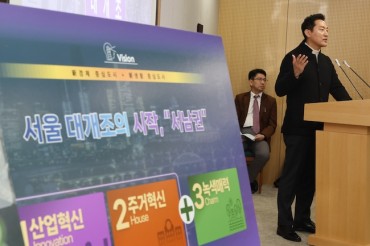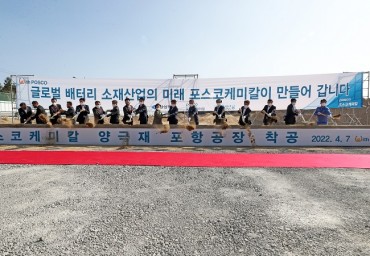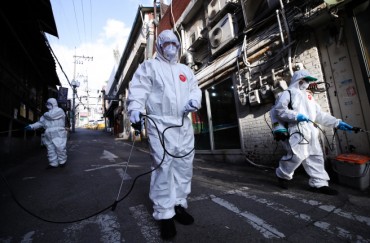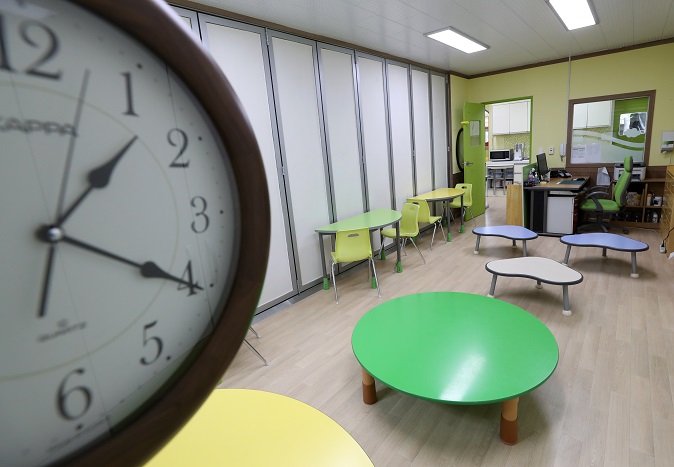
This photo shows an empty after-school child care classroom at an elementary school in Chuncheon, Gangwon Province, on Nov. 6, 2020. (Yonhap)
SEOUL, Nov. 6 (Korea Bizwire) — Thousands of after-school child care workers at elementary schools staged a one-day strike Friday, leaving parents and teachers scrambling to fill the void.
Some 4,900 after-school child care workers, around 41 percent of their total number in the country, took part in the strike, according to a national labor union for non-regular school workers.
The union had previously expected some 6,000 workers, or about half the total, to participate.
During a press conference outside the headquarters of the ruling Democratic Party, the union members demanded that the education ministry withdraw a bill that transfers responsibility for the after-school program from schools to local governments.
They said the local governments could then commission the private sector to provide the services, leading to poorer working conditions for them.
“If the government continues to increase after-school programs in a haphazard manner, these programs will become a breeding ground for corruption, just like private kindergartens, even with enormous investment from the state,” the union said.
The union members also demanded an elevation in their employment status from part time to full time, saying they have been working longer hours without additional pay amid increased demand for their services due to the coronavirus pandemic.
The members held rallies throughout the day outside the education ministry and the education offices of each municipal and provincial government.
They have threatened to repeat the strike with more people for longer than a day unless their demands are properly addressed.
The education authorities asked school officials to volunteer their services to continue the child care program during the strike and use the services of local community centers if necessary.
The authorities also mobilized non-striking workers and asked parents not to use the program Friday unless it was absolutely necessary.
As a result, 7,980 out of 12,211 after-school classes nationwide, or 65 percent, were held as usual, according to the education ministry.
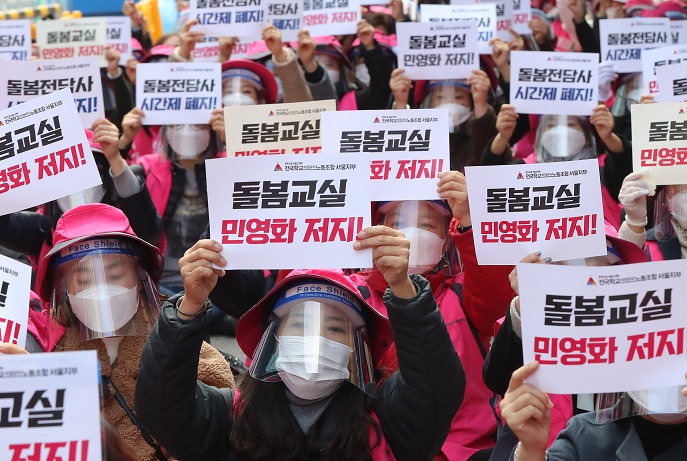
This photo shows striking after-school child care workers holding a rally outside the headquarters of the ruling Democratic Party in Seoul on Nov. 6, 2020. (Yonhap)
Education Minister Yoo Eun-hae convened an emergency meeting to discuss the plans of local education offices and schools for operating the program.
The ministry said it plans to work with local education offices to normalize the program immediately after the strike.
Parents and teachers across the country aired their grievances.
“I had to ask for a day off from work because I had no one to look after my son after school,” said a 41-year-old mother living in the southeastern port city of Busan.
A 38-year-old mother in Cheongju, 137 kilometers south of Seoul, said she had to ask to work from home because she had nowhere to take her third-grade daughter after school.
“I felt very uncomfortable asking to work from home,” she said. “I don’t understand how they can strike when everyone is struggling because of the coronavirus pandemic.”
An elementary school teacher complained that the government was only patching up the problem by asking faculty to substitute for the striking workers on top of doing their own work.
“They shouldn’t try to just get past today but come up with fundamental solutions,” she said.
Around 200,000 elementary school students benefit from the program. Over 80 percent of them are either first- or second-grade students.
(Yonhap)



